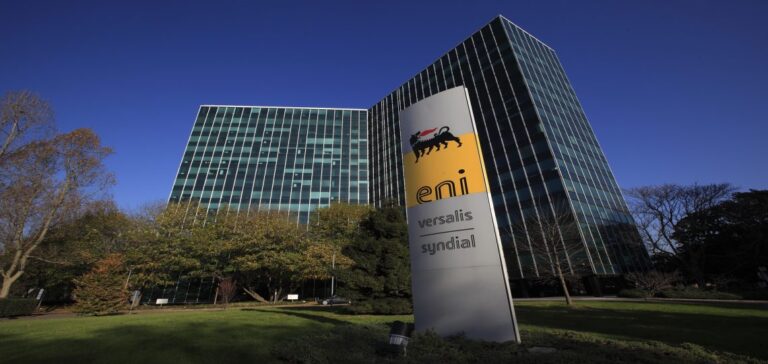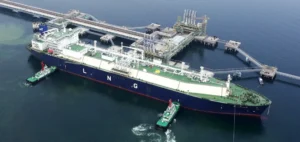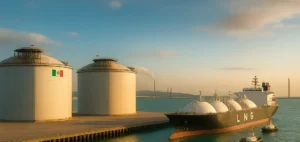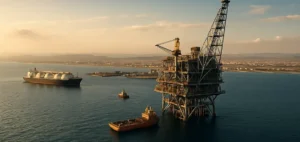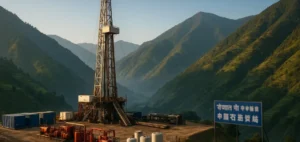Following the Russian-Ukrainian conflict, Italy has engaged an import strategy that is now paying off. At the end of February, the country embarked on a tour of the main African gas producers. While Germany, for its part, was stalling to find sustainable solutions to replace Russian gas by mid-2024. However, this goal still seems a bit too ambitious for some players such as RWE who believe that it could take longer.
The Italian anticipation
In the wake of the Ukrainian conflict, Mario Draghi, then government representative, and the CEO of Eni embarked on a tour of the main gas producing countries. These visits were planned according to a well constructed roadmap. In fact, since the end of February, Italian officials have been able to establish relationships that have paid off, especially with the Algerian SONATRACH in February and then the following month, talks with the governments of Angola,Egypt and the Republic of Congo.
Eni, then takes advantage of its existing supply relationships to obtain additional gas. The objective is to replace a large part of the volumes coming from its main supplier, Russia. This is an agile change that many European countries are making as the Russian-Ukrainian conflict continues.
Germany, an economic powerhouse and long synonymous with prudent planning, is on the verge of recession. Its industry is preparing for gas and electricity rationing.
Italy, a country used to economic crises, seems relatively resilient. The country obtains additional supplies and manages to convince that it will not need to ration gas. In addition, the government gratifies itself by hailing the country as the best in Europe in terms of energy security.
European disparities
The two countries are in contrasting circumstances as a severe energy crisis weighs unevenly on a continent. A large part of the continent is facing a winter supply crisis, especially Germany, Hungary and Austria. Conversely, the least affected countries such as Italy, Sweden or the UK do not rely on Russia.
While Italy relied on Russia as its largest gas supplier, its diversity of suppliers is a valuable asset. Thus, the country has the opportunity to build on and intensify its long-standing ties with Africa. The country was thus in the best position to withstand an interruption of supplies from Russia.
The energy shortage caused by the conflict is forcing governments to confront the risks of over-reliance on one supplier. It echoes the energy crisis of the 1970s which led the West to rethink its dependence on the Middle East. This change stimulated global exploration and the search for alternative suppliers such as Venezuela and Mexico.
The German Ministry of Economics says it wanted to get off Russian gas imports as soon as possible. In particular, Germany will lease five floating terminals for liquefied natural gas (LNG). Currently, the country has no LNG terminal, while Italy has three in operation and recently purchased two more.
Diversification of gas deliveries
Italy consumed 29 billion cubic meters of Russian gas last year, about 40% of its imports. The country is gradually replacing approximately 10.5 billion cubic meters of Russian gas with increased imports. Thus, from this winter on, the gas comes from other countries.
Most of the additional gas will come from Algeria. The country says it would increase its total deliveries to Italy by nearly 20%. Gas deliveries from Algeria to Italy would reach 25.2 billion cubic meters of gas this year.
From spring 2023, an increasing flow of LNG will start to arrive in Italy. The LNG will come from Egypt, Qatar, Congo, Nigeria and Angola, among others. Thus, Rome will replace 4 billion cubic meters of additional Russian gas.
Last year, Germany imported 58 billion cubic meters of Russian gas. This figure represented 58% of the country’s consumption. However, supplies from Nord Stream 1 have not taken place since August.
Divergent trajectories
Germany is unable to secure sufficient long-term replacement supplies from other countries. Moreover, the country does not have a national oil and gas company producing abroad like Italy with Eni. Thus, the country is forced to turn to the spot market.
Germany does not benefit from Italy’s proximity to North Africa. Nor does it enjoy the wealth of Great Britain and Norway in the North Sea. Finally, it does not have significant oil or gas reserves.
German leaders have made many miscalculations in recent years, especially after the attachment of Crimea to Russia. In 2006, it was Italy that was the fastest to obtain supplies of Russian gas. At the time, Eni signed the largest gas contract ever signed by a European company with the giant Gazprom.
However, over the past eight years, the two countries have diverged. Germany doubled its share of Russian gas until it became more and more dependent. Conversely, Italy sought to cover itself.
The warning of 2014
Italy was beginning to chart a different course in 2014, when a new government replaced that of Silvio Berlusconi, a friend of Putin. At the same time, the arrival of Descalzi at the head of Eni confirmed the change in Italy’s energy strategy. Thus, from the moment he joined Eni, Descalzi focused on exploring Africa.
In 2015, Eni scored a success in Egypt with the discovery of the largest gas field in the Mediterranean Sea, Zohr. Thus, the company started production in less than two and a half years, marking a rapid development in comparison to the industry. In addition, in Algeria, Eni concluded an agreement in 2019 to renew gas imports until 2027.
The attachment of Crimea to the Russian Federation in 2014 was a turning point. Rome withdrew its support for Gazprom’s $40 billion South Stream project. Thus, Eni abandoned South Stream within a year, before the project was no longer a priority for Moscow.
Italy turned to the construction of the trans-Adriatic gas pipeline, starting from Azerbaijan and passing through Greece and Albania. For its part, Germany did not reduce its exposure to Russia. In addition, Germany formed a consortium with Gazprom and companies in 2015 to build the Nord Stream 2 gas pipeline.

